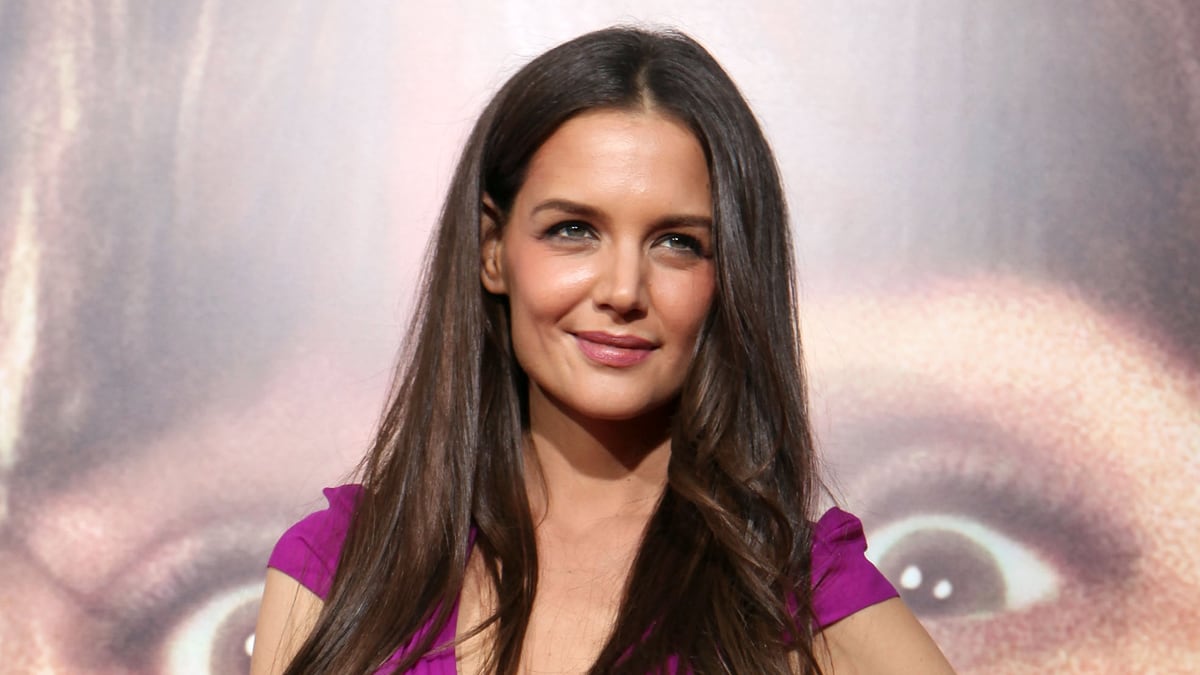In the new Adam Sandler movie Jack and Jill, a Sandleresque romp in which the comedian doubles as a suburban dad (Jack) and his nasal-voiced, beyond-annoying twin sister (Jill) in for the holidays, Katie Holmes plays the straight foil—the voice of sweet, naive reason amid 90 minutes of humor best enjoyed by an 8-year-old.
The role is part of a rolled-out comeback for Holmes that has included the Sundance cop drama Son of No One; the controversial Reelz Channel miniseries The Kennedys, in which Holmes played Jackie O.; and Don’t Be Afraid of the Dark, the Guillermo del Toro horror film released in August that made a mere $23 million at the domestic box office. There was also Holmes’s recent appearance as a “slutty pumpkin” on How I Met Your Mother.
It’s an odd potpourri of choices for an actress who was once one of the most sought-after young stars in Hollywood, but who virtually disappeared from the screen in the years following her marriage to Tom Cruise in 2005. But it also follows the trajectory Holmes has always stuck to as a performer, which is to throw everything against the wall and see what sticks. Which raises the question: how does an actress who was never really defined in the first place go about defining herself at the age of 32, which, in movie terms, is more like 48?
ADVERTISEMENT

Holmes is not a bad actress. She is good, at times very good. But for all the early fanfare, when she first arrived on the scene in Ang Lee’s The Ice Storm (1997) and then, more famously, as Joey Potter, the precocious tomboy on the teen soap Dawson’s Creek, she has never been considered great. Partly that’s because she never had a big, breakthrough moment that made it clear who, exactly, Holmes was onscreen. Unlike with her Dawson’s costar Michelle Williams, there was no Brokeback Mountain to wow critics and storm the Oscars. Nor was there a smart, commercial hit, like Emma Stone enjoyed this past summer with The Help, to establish that she could do much more than just smile and look pretty here and there (which is all that’s required in Jack and Jill).
And then, before anyone could think too hard about it, she was suddenly Mrs. Tom Cruise, and more interesting as a global spectacle (i.e., one half of the Crazy Cruise Train that was just pulling out of the station when they began dating) than an artist. The couple’s exclusive photo shoot with Annie Leibovitz for Vanity Fair of baby Suri was international news.
Holmes also started to take on some of her partner’s more curious traits. In a bizarre interview with W magazine conducted in the throes of the TomKat courtship, Holmes was trancelike as she responded to questions, regardless of their subject, with triple-exclamation-point quotes about how “amazing” and “exhilarating” life with Tom is. She was accompanied to the interview with her new Scientology “chaperone.”
Adorable Katie, who’d spent the previous five years with her apple pie equivalent, Chris Klein, was suddenly seeming strange.
This was not the way it was supposed to go for the Toledo, Ohio native whose break in the entertainment business reads like a modern-day fairy tale. While still in Catholic high school, where she got straight A’s, Holmes’s audition tape wound up in the hands of Lee, who promptly cast her in The Ice Storm. Dawson’s followed, and she was off.
Early on, her surprising juxtapositions—young but wise, cute but beautiful, all American but still a little mysterious—made her a natural choice for a series of indie movies that set her on the kind of path that Williams has savvily followed. There was Doug Liman’s Go, Curtis Hanson’s The Wonder Boys, and, most memorably, Pieces of April, in which Holmes channeled her inner Avril Lavigne to grungily touching effect. The film, a Sundance darling in 2003, established her once and for all as more than just a teen TV star and, momentarily, an indie It Girl.
But unlike Williams, Holmes had no interest in the strictly alt route. There was always the sense that she wanted to be everything—big and small—an option her versatile appeal afforded her. Hence Batman Begins, Abandon, Phone Booth, and Muppets in Space. None of which, with the exception of Batman Begins and Phone Booth, actually made much money, something she herself has acknowledged, once characterizing her career as a string of “bombs.”
“Usually I’m not even in the top 10,” she told Giant magazine in 2005, before taking a subtle swipe at her management, saying, “It’s not like I have a lot of stuff that’s great just waiting for me to sign on to do.”
So now, six years later, what should she do?
According to one agent, she would be wise to look into TV roles. “On the small screen, she would be golden,” this agent said. “But I don’t think that’s what she wants to do, and I respect that.”
Interestingly, Holmes has shown interest in theater, winning kudos for her role in the Broadway revival of Arthur Miller’s All My Sons in 2008.
In Hollywood, however, the Cruise factor, complicates things, says one producer, who thinks that Holmes and Cruise are so inextricably linked that even their careers are viewed as one. Which, considering that Cruise is still attempting to regain his post-Oprah freakout footing, is not an auspicious sign for Holmes. (This December’s Mission: Impossible—Ghost Protocol may turn things around.)
“He jumped on the couch before she had any really big hits, so, yes, their careers are associated,” this producer said.
The producer pointed out that this was also true of Cruise and his first wife, Nicole Kidman, though timing was in Kidman’s favor. When Kidman married Cruise at the height of his fame in 1990, she was a little-known Australian actress. The striking couple became pitch-perfect (Cruise was more in the closet about his personal beliefs back then) press darlings and, by the time of their divorce 10 years later, Kidman was a world-class star with a number of major films under her belt.
Still, Holmes is showing a self-awareness of where she needs to go, telling the London Daily Mail recently that, having hit 30, she’d like to play more grown-up roles.
“When I turned 30 a lot of people can get nervous about that, and I was actually excited because I felt like, oh good, now people pay attention to me,” she said.
“I feel like I am ready for parts that maybe I wasn't ready for in my 20s.”
Sadly, Jack and Jill isn’t one of them.




